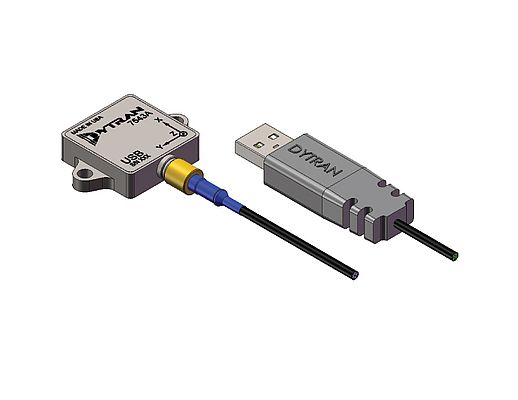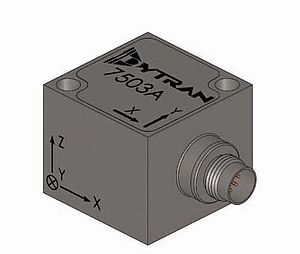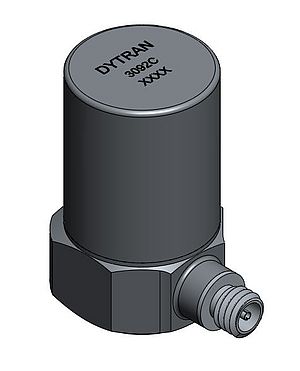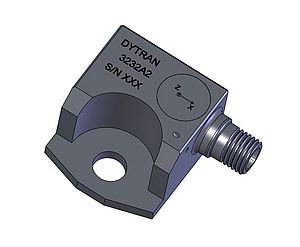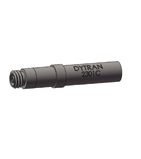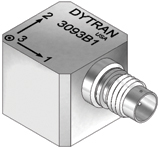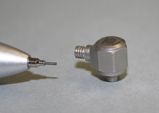Dytran Instruments has developed the VibraScout Vibration Measurement System, which includes a USB digital triaxial accelerometer combining a MEMS accelerometer with a microcontroller to create an intelligent sensor. The Vibration Measurement System consists of a USB triaxial DC response accelerometer, 15-foot 4pin to USB cable assembly, VibraScout Data Acquisition Software, and VibraScout Windows compatible Post Processor software on CD (no license required). In addition to the vibration measurement system, the only required hardware is a personal computer and a USB port. The triaxial accelerometer features power from a PC bus, and as a result no additional external power supply is required. The software package supplied with each system allows for real time, three directional acceleration acquisition (including Static Inclination) along with real-time temperature monitoring. The standard USB protocol handles all the sensor communications with the PC and provides the following information: storage of acceleration and temperature information; real-time scrolling plots of acceleration data with display of min, max and mean; real-time logging of data to delimited file for importing into Excel; both auto and smart triggering modes; digital filters to improve signal/noise ratio; real-time data compression to Fast Fourier Transform (FFT); and many more. Offered with a 16g range, the variable capacitance (VC) accelerometer combines an integrated VC chip in a hermetically sealed titanium housing weighing 17 grams, and is offered with a low-end frequency response down to DC (0 Hz) and an upper frequency range of 1,100 Hz. Units are rugged to 10,000g shock and operate from +3.8 to +6.0 VDC power. The VibraScout Post Processor software is designed to provide a user with the tools to apply non-linear interpolation to resample raw data that is recorded with the software at higher frequencies to improve signal resolution. Data is valid only up to 1.1 kHz after applying the post processing. This mathematical interpolation is performed using the Whittaker-Shannon interpolation technique to reproduce the recorded real signals with proper amplitude.
Vibration Measurement
Includes USB digital triaxial accelerometer
- by Dytran Instruments Inc
- December 6, 2012
- 2113 views


